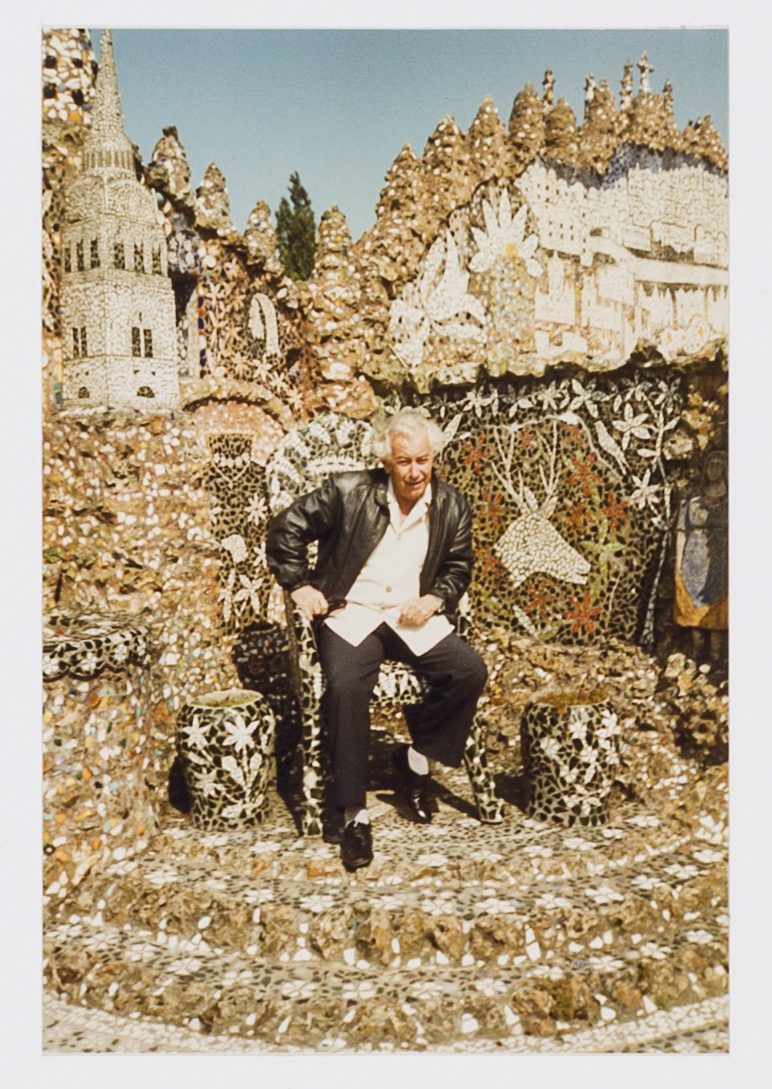The André Escard Documentation 486 documents dans la collection

BIOGRAPHIE :
Né le 3 janvier 1920 à Paris, André Escard suit sa scolarité au lycée Henri-IV. Il entre ensuite à la faculté de droit où il obtient sa licence. Il devient, à cette époque, un passionné de littérature et de cinéma. En 1940, André Escard est mobilisé et en 1943 il devient résistant en entrant dans le maquis du Haut-Jura sous le surnom de Rimb. Ce surnom lui a été donné en raison de son admiration pour le poète Arthur Rimbaud dont il connaissait les textes par cœur. À la fin de la guerre, il part pour la Côte d’Ivoire où il est nommé administrateur au cabinet du gouverneur à Abidjan. En faveur de l’indépendance africaine, il prend contact avec Félix Houphouët-Boigny puis travaille au syndicat agricole africain. Après la proclamation de l’indépendance de la Côte d’Ivoire le 7 août 1960, il devient secrétaire général de la chambre de commerce et d’industrie du pays. André Escard rentre en France en 1983 suite à des problèmes de santé. Il commence alors une longue convalescence et s’installe aux Crapottes à Dammarie-sur-Loing pour sa retraite. Dès 1984, il s’intéresse à l’art brut et à l’art singulier puis entame une série de voyages en France et à l’étranger. Avec sa femme, Michou, il découvre des environnements visionnaires et rencontre des créateurs d’art alors appelés singulier (type d’artiste). Jean-Claude Caire lui propose de faire part de ses rencontres en écrivant des articles pour le Bulletin de l’association les Amis de François Ozenda. C’est ainsi que son premier article est publié en 1992 dans le numéro 46, sous la rubrique « Les pérégrinations d’André Escard ». Par la suite, il publie aussi des articles pour la revue Gazogène de Jean-François Maurice ainsi que pour celle de Marie Morel intitulée Regard. André Escard décède le 21 décembre 2008.
METHODE DE TRAVAIL :
Quand André Escard a un coup de cœur pour une œuvre dans une revue ou une exposition, il récupère l’article ou les documents de l’exposition afin de créer une fiche sur l’artiste. Ensuite, il essaye de le contacter pour l’interviewer et prendre en photo ses œuvres et ce moment de rencontre. André Escard pouvait prendre jusqu’à 200 photographies lors d’une visite. Il développe ensuite les photographies en deux exemplaires (un pour lui et un pour l’artiste) et les colle sur des feuilles blanches en papier bristol de 50x65 cm. Il inscrit le nom de l’artiste ou du lieu visité en haut à droite du recto de la feuille. Il y colle également tous autres documents sur l’artiste ou en lien avec cette rencontre et y ajoute des annotations. Seulement une face est couverte de renseignements. Par la suite, il rédige un article sur l’artiste ou le lieu concerné et envoie son manuscrit à Sonja Dreux afin qu’elle le tape à la machine. André Escard procède de la sorte car son écriture est difficilement lisible. Le tapuscrit est ensuite envoyé à Jean-Claude Caire afin qu’il soit publié dans le Bulletin de l’association les Amis de François Ozenda.
LE FONDS :
En 2004, sa documentation comptait 9 191 fiches rangées dans 19 bacs en bois sur roulettes, chacun comportant trois cloisons. Le nombre de fiches par artiste varie énormément, allant de une à cent feuilles. Après la découverte d’une œuvre, s’il n'arrive pas à contacter l’auteur, la feuille de l'artiste comporte seulement son nom et l’article déniché . Au fils des ans, la fiche peut être complétée. Lorsqu’il voit fréquemment l’artiste et entretien un lien d’amitié avec lui, le nombre de fiches est beaucoup plus important, comme c’est le cas avec Raymond Reynaud, Raymond Dreux, Danielle Jacqui ou encore Marie Morel. Quand il existe plusieurs fiches sur un artiste, il les regroupe dans un carton à dessin. Les feuilles sont classées dans l’ordre alphabétique. André Escard réalisait aussi des fiches sur des musées, des lieux d’exposition, des galeries, des festivals, des jardins et des environnements visionnaires. Il regroupait également diverses informations par continents et réunissait ses publications.
De son vivant, la documentation d'André Escard était stockée dans sa demeure. À sa mort, elle a été entreposée au siège de l’association Les Amis de Gazogène à Bélaye dans le département du Lot avant d’être donnée au LaM, Lille Métropole Musée d’art moderne, d'art contemporain et d'art brut.
INVENTAIRE :
Retrouvez l'inventaire de la documentation d'André Escard sur notre portail documentaire et dans le Catalogue Général des Manuscrits (CGM) du Catalogue Collectif de France (CCfr).
Collection Tree
- La documentation d'André Escard






























